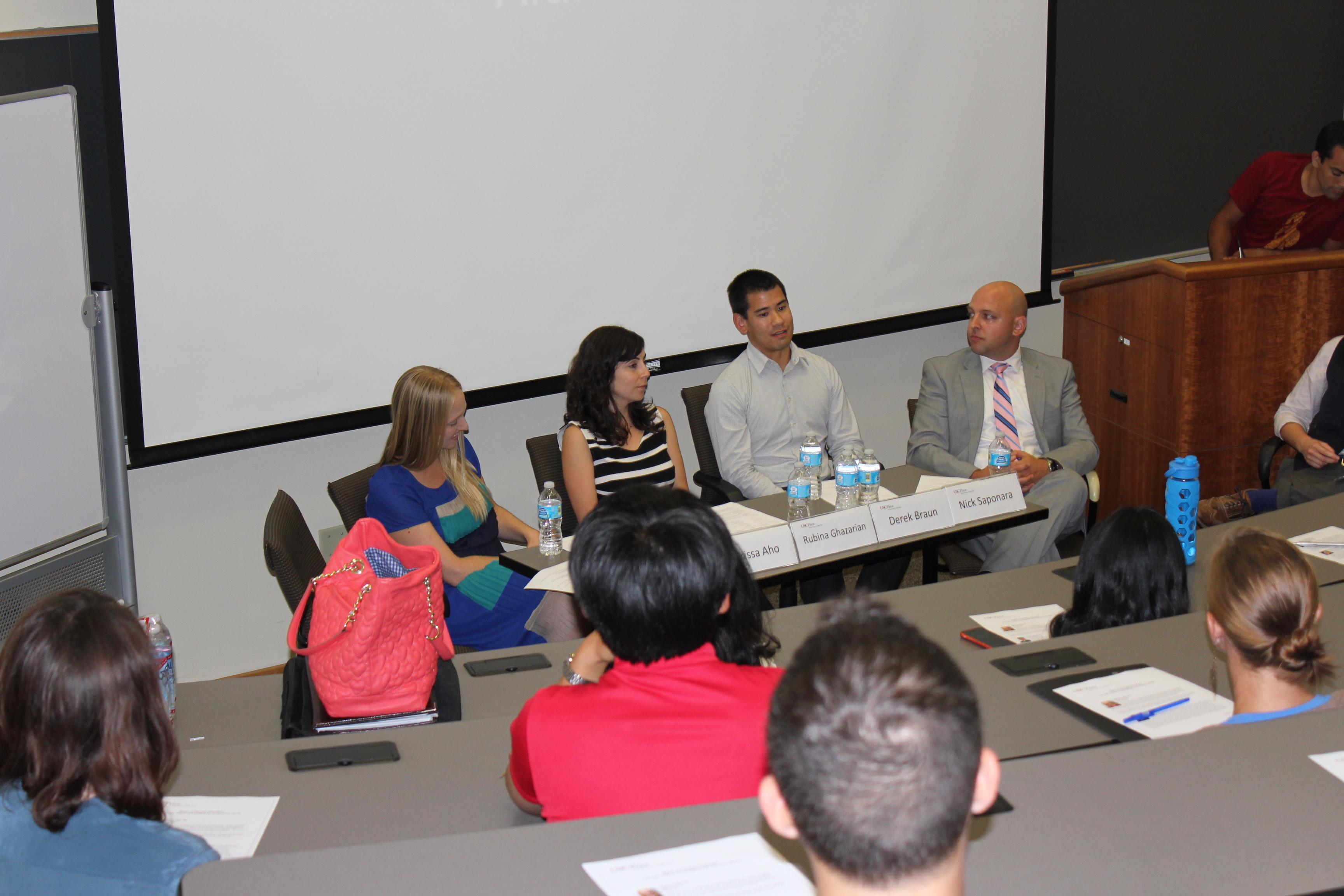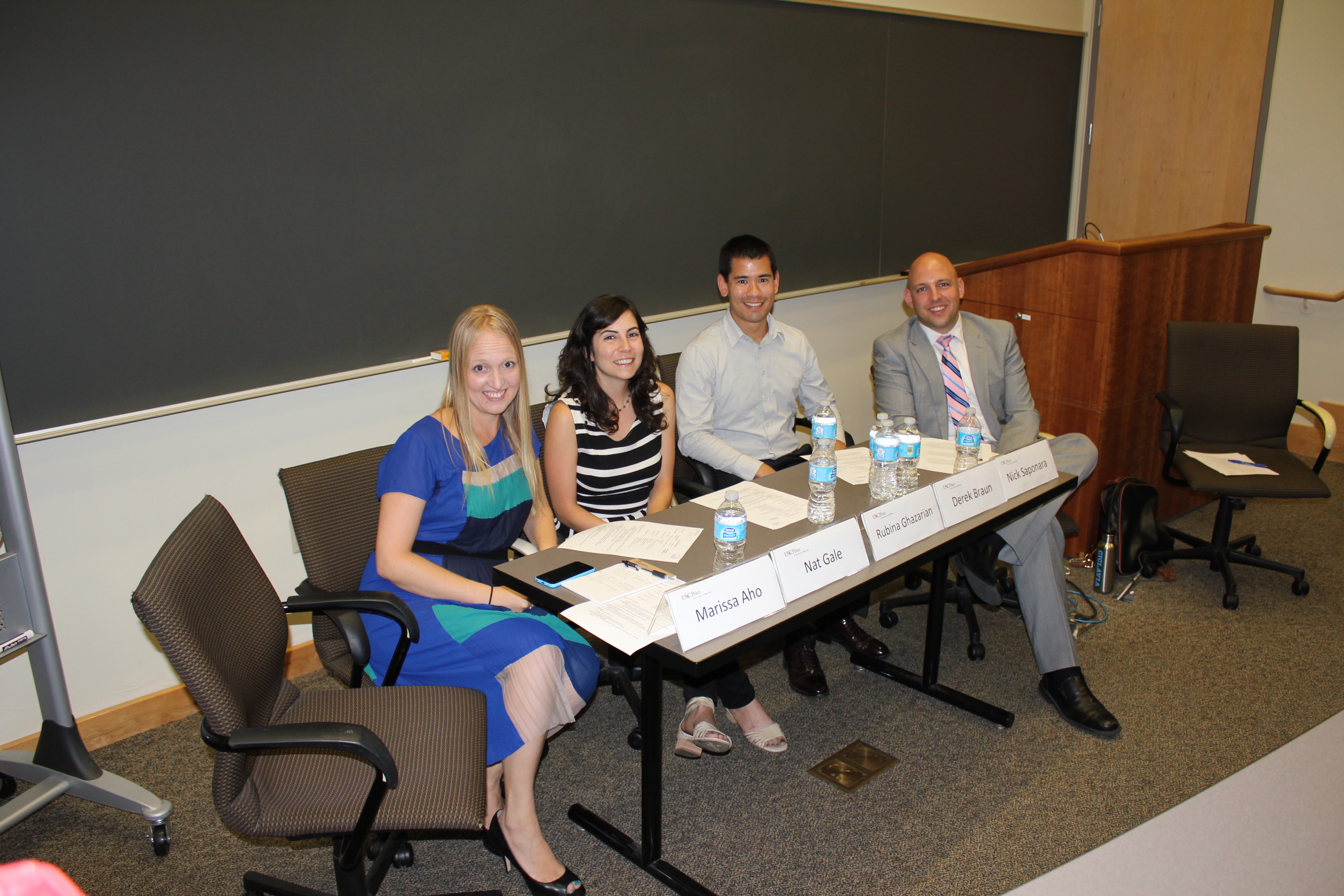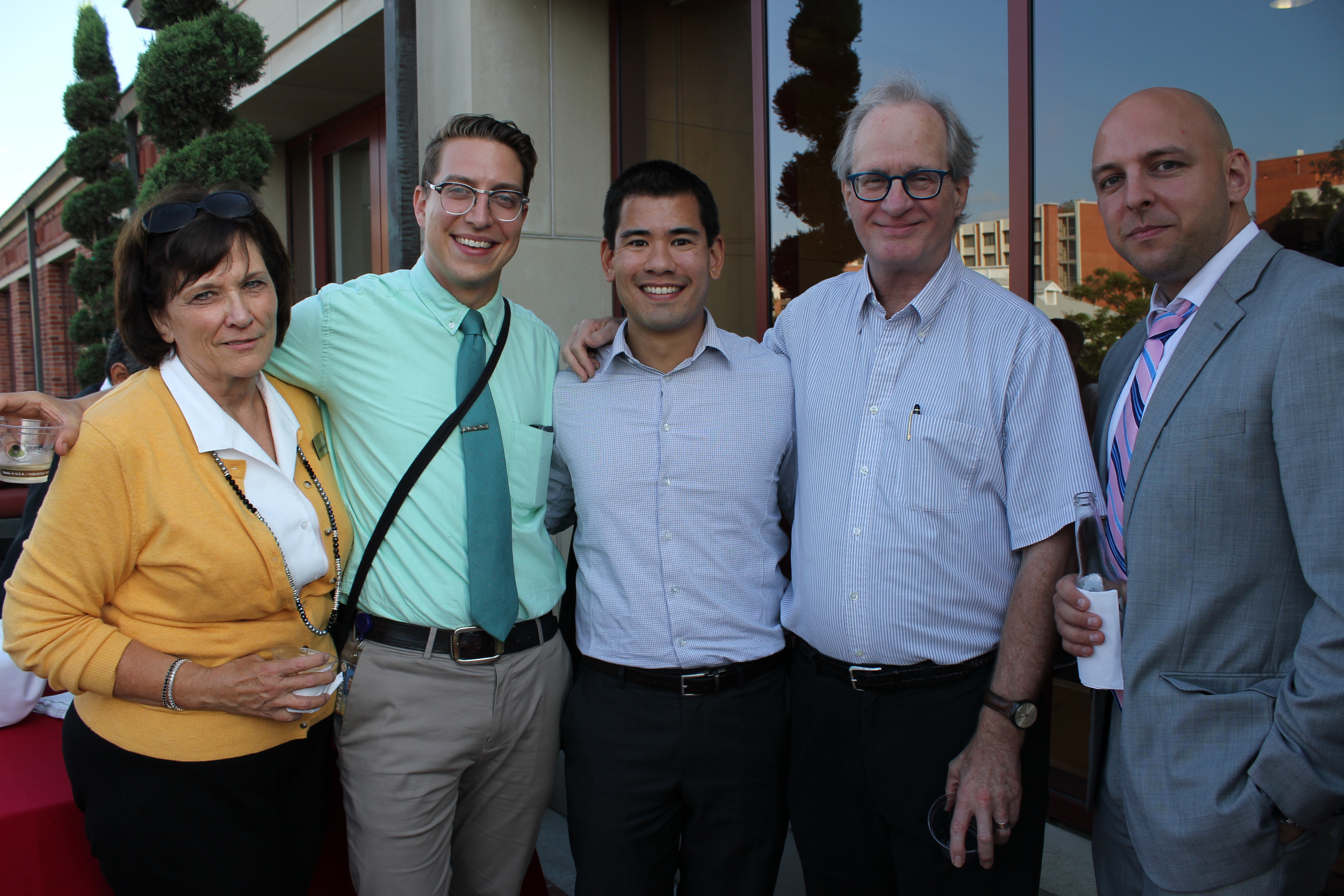AIA/APA Symposium Event: Financial Obstacles to Infill Development
Nadine Fogarty will be attending a symposium on the evening of Wed. September 17, in which leading economists and development professionals will talk about the relationship between what city’s require and how well they leverage community benefits. The event begins at 5:45pm and is co-sponsored by AIA East Bay and Northern California APA. It will be held at 1405 Clay Street in downtown Oakland.
For more information, please go to: http://aiaeb.org/2014/08/mpsept2014/
“Your MPL Degree and Bridging the Professional World”
Happy Friday and Hello three-day weekend!
Here is a highlight from last week:
Our Senior Associate, Derek Braun, was part of a panel at the University of Southern California (USC). The panel was for the USC Master of Planning student orientation, for the session “Your MPL Degree and Bridging the Professional World.”
Derek answered questions about his own academic and career path, and gave some insights into how students should structure their class and internship experiences to prepare for their future careers.
See pictures below!
HUD Sustainable Communities Webinar
Sujata Srivastava, along with Vinz Koller and Kristin Wolf of Social Policy Research Associates, will be moderating a Workforce and Economic Development webinar for HUD Sustainable Communities grantees on August 27, 2014.

1) A discussion and interaction around specific trends and innovations in workforce and economic development;
2) an introduction to the new workforce law (WIOA), featuring workforce innovators who are laying the foundation for the future of economic development and jobs policy and programs; and
3) a brief preview of a planned Economic and Workforce Development Convening for grantees on October 23-24 in Oakland, CA.
Guest speaker Vera Krekanova Krofcheck, Director of Strategy and Research for the Three Rivers Workforce Investment Board will share the innovative work of her WIB.
Creating Connected Communities Guidebook Released
The U.S. Department of Housing and Urban Development just released “Creating Connected Communities: A Guidebook for Improving Transportation Connections for Low- and Moderate-Income Households in Small and Mid-Sized Cities,” which Strategic Economics wrote in partnership with the Center for Neighborhood Technology and Reconnecting America as part of the Center for Transit-Oriented Development.
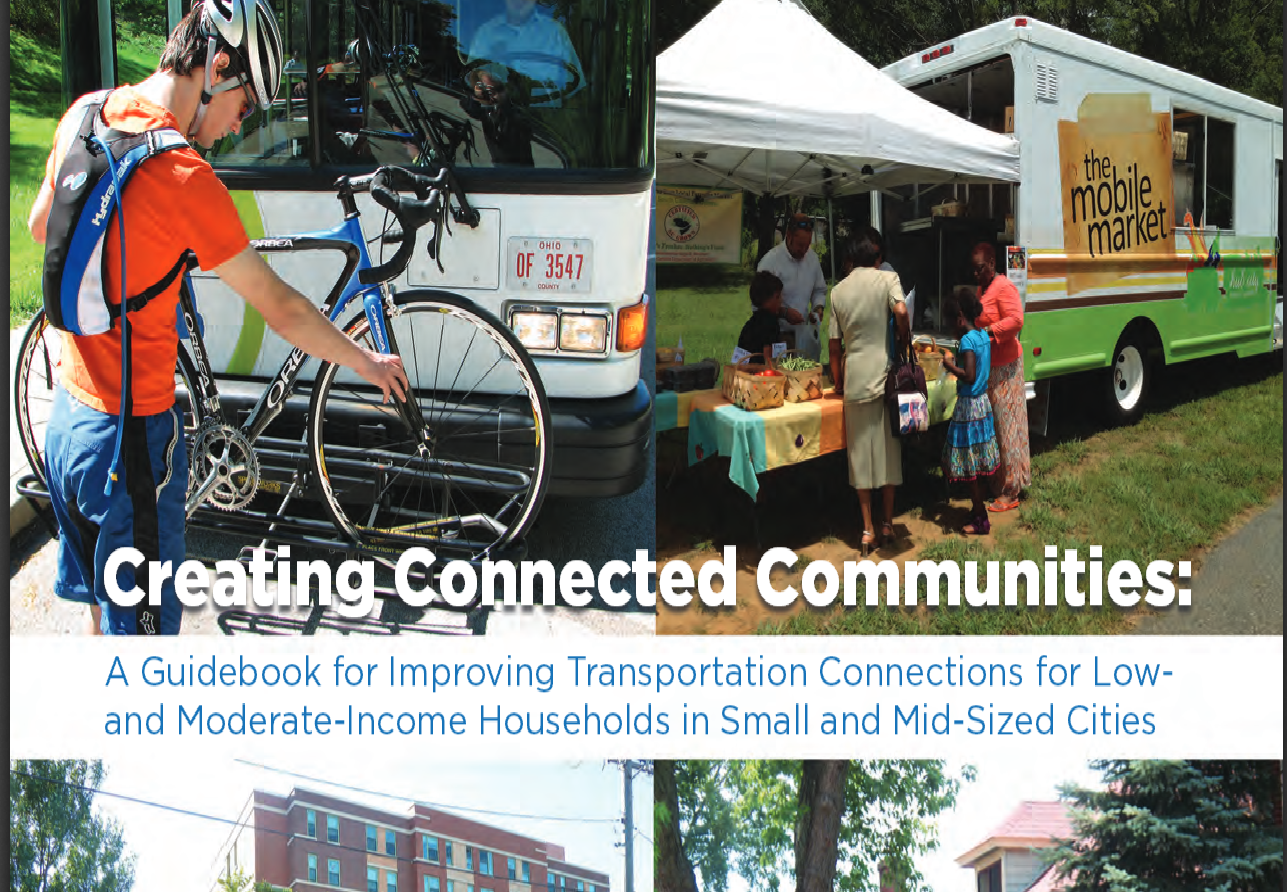
APA Chapter Awards
We’re on a roll! The recent award announcements by the California Chapters of the APA have given Strategic Economics cause for celebration. The Inland Empire Section gave a Best Practices award to the Economic Development and Land Use Strategy for College Heights in the City of Upland. Teaming with PlaceWorks (formerly The Planning Center/DC+E) and Fehr & Peers, Strategic Economics created an economic development strategy which moves beyond the realm of “business attraction, retention and expansion” to consider the City’s economic health from a variety of perspectives, including land use, fiscal sustainability, and quality of employment opportunities. The strategy includes a detailed inventory of implementation tools and policies tailored to reflect local workforce, economic conditions and building stock in the study area, and a summary of external resources available to local businesses, with a focus on tools for small business and the manufacturing industry.
In addition, the APA California-Northern Section gave an Award of Excellence in the Best Practices category to the 21 Elements/Grand Nexus Study. Strategic Economics and Vernazza Wolfe Associates, Inc. are preparing the “Grand Nexus Study,” a multi-jurisdictional affordable housing nexus and impact fee feasibility study. The Grand Nexus Study, which will be completed in December, is being conducted in conjunction with “21 Elements,” a collaborative project managed by the San Mateo County Department of Housing and Baird + Driskell Community Planning that aims to encourage and assist with the production and certification of high quality Housing Elements in San Mateo County. Project partners in 21 Elements and in the Grand Nexus Study include the California Department of Housing and Community Development, the San Mateo County Department of Public Health, Enterprise Community Partners, Inc., and all twenty-one jurisdictions in San Mateo County.
The Bergamot Area Plan was recognized by the Los Angeles Section of the APA California Chapter with the Outstanding Planning Achievement Award for a Small Jurisdiction for 2014. For this project, Strategic Economics, teaming with PlaceWorks, conducted a detailed market study and financial feasibility analysis to assist the City of Santa Monica and the consultant team identify land uses and building types that were both economically feasible and consistent with the goals of local business owners, residents and other stakeholders. Strategic Economics also worked with City staff to develop a funding and financing strategy to guide the implementation of the area plan.
SF Chronicle Features Strategic Economic’s Report on Chain Stores in San Francisco
Strategic Economics’ draft report on San Francisco’s regulations of chain stores (or “formula retail”) was featured in today’s San Francisco Chronicle. The City and County of San Francisco is considering a number of changes to existing regulations on where chain stores can locate within the city. In order to inform the policy decision, the City hired Strategic Economics to assess the role existing chain stores play in serving the daily shopping needs of residents, and the extent to which formula retail adds or detracts from the aesthetic character and economic vibrancy of the City’s neighborhood commercial districts. The study also includes the first comprehensive effort to identify and map all of San Francisco’s existing chain stores, as well as research into topics such as the employment and real estate impacts of chain retailers. We hope you’ll take a look at the draft report or the Chronicle’s summary!
Dena Delivers Keynote Address at New Partners for Smart Growth Conference
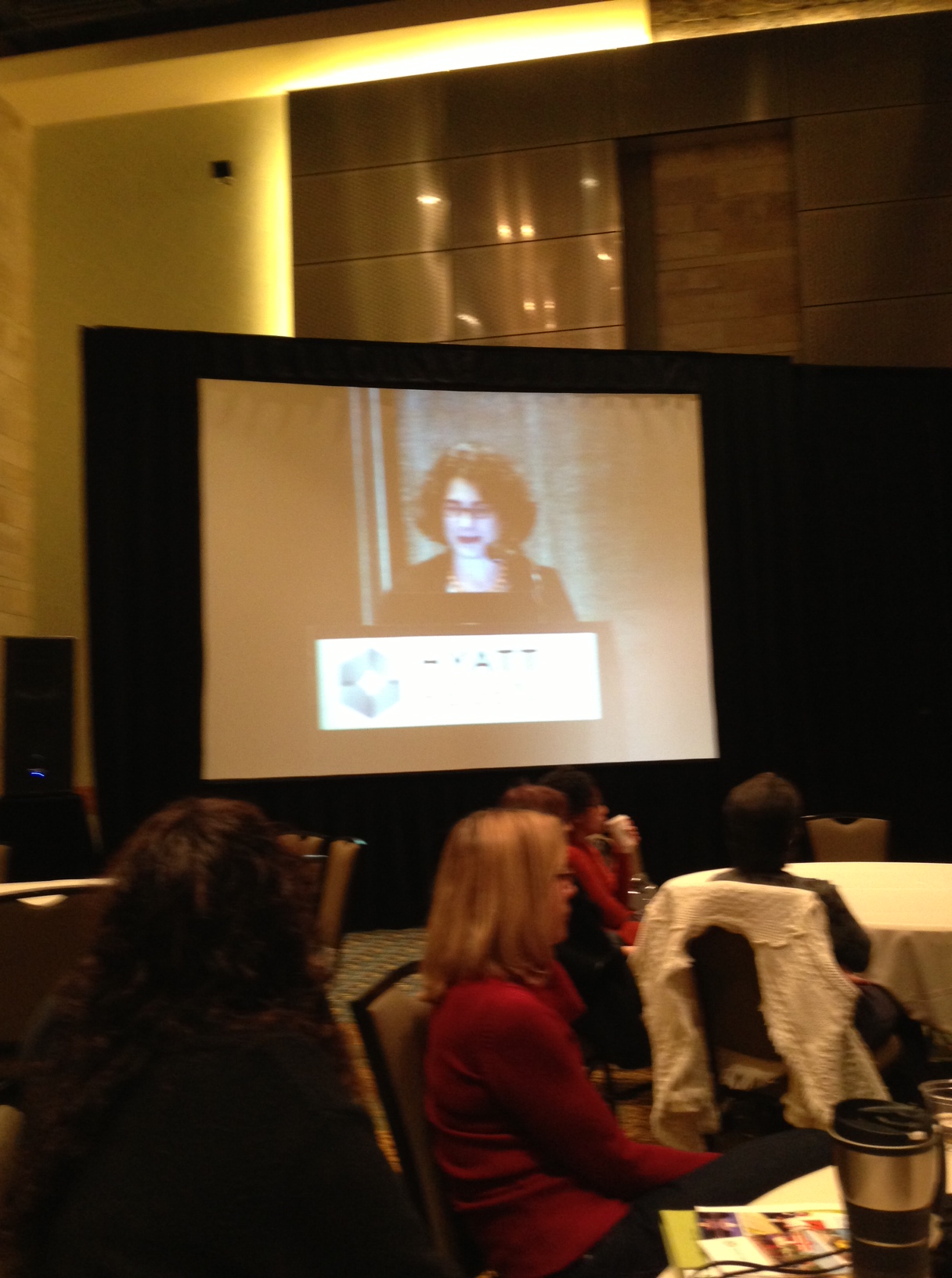
In her speech, Dena focused on five trends facing the planning and smart growth world– which are all interconnected and can be broken out in many ways, but here is her cut: (1) technological innovation will continue to shape the built environment in ways that will almost certainly continue to create “winners and losers”; (2) there is an increased need for government be to be more proactive in shaping the built environment using a cost/benefit calculus that is more equitable or just than the way we have calculated the costs and benefits of public investment in the past; (3) there is continued fragmentation in the way people define “community,” and a growing interest in funding “what I want to fund,” rather than being willing to invest in a shared future beyond one’s personal interests; (4) there is an increasing tendency of government to be reactive—in “crisis management” mode, rather than acting in ways which encourage sustainability, thus better positioning ourselves to get out in front of rapidly evolving trends, and (5) there is increasing tension across generations—between those who don’t want to change versus those who are accepting of change, and an increasing income inequality within generations that also serves as a source of tension around community change.
To address those needs, Dena suggested, we have to redefine our role to focus on being the implementers of smart growth, not just the dreamers who paint the picture of what a more beautiful world we could have, if we could only grow “smarter.” But to do this, we have to acknowledge the types of barriers to implementation that the trends Dena pointed out will make this a challenging task. Therefore, what we must all do is take on the hard work it takes to understand how to deliver –actually deliver our vision across a wide range of contexts, using a wide range of solutions, knowing that we might not reach our full aspirations, but that we can still have a positive impact. We can no longer merely spout high-minded ideals and produce vague plans that make us feel good, but are in fact, impossible to execute. In a word, we need to focus on what works for people in a particular place, and not get mired in the intricacies and ideology. We must learn how to make the vision of smart growth an implementable reality for all people and all communities.
Report Published By “Public Works”
Last April, we told you about the U.S. Environmental Protection Agency’s release of our report on existing and emerging tools for financing infrastructure for transit-oriented development in this blog post.
Recently, our colleague at CH2MHill published an article in Public Works, featuring the report. The article has just been posted to the Public Works website as part of the January 2014 annual outlook issue. You can view it here.”
Five Emerging Tools for TOD and Infill Infrastructure Finance
Strategic Economics and ARUP recently completed a study for the Grand Boulevard Initiative on infrastructure needs and financing mechanisms in the El Camino Real corridor, which stretches 43 miles from Daly City to San Jose, and falls under the jurisdiction of 19 cities, two counties, and multiple special districts and other agencies. The study provided us with an opportunity to think creatively about how cities and counties might benefit from working together to fund and implement infrastructure projects, and to explore emerging tools for financing infrastructure in infill and transit-oriented development (TOD) settings. My personal favorite part of the study was researching five emerging tools and strategies in the field of infrastructure finance that may have medium- to long-term potential to help pay for TOD and infill improvements:
- California’s greenhouse gas (GHG) emissions cap-and-trade program, which went into effect in 2013, will generate new revenues for investments that advance the state’s long-range climate goals. Sustainable Communities & Clean Transportation is one of three programs in which the state plans to focus investments, and could include funding for complete streets improvements, bicycle and pedestrian infrastructure, projects that increase transit mode share, and other types of infrastructure that contribute to the implementation of local and regional Sustainable Communities Strategies (SCSs).
- Corridor-level parking management strategies would set parking prices and manage parking demand across a transit corridor, including publicly-owned on- and off-street spaces. Revenue from parking fees throughout the corridor could be pooled to finance needed improvements at strategic locations, generating more revenue than a more localized approach. The city of Aurora in the Denver metro area conducted a “Strategic Parking Plan and Program Study” that lays out what this type of innovative parking management strategy would look like for the planned I-225 light rail corridor.
- Congestion pricing mechanisms are a type of user fee where drivers are charged higher fees at peak periods of demand in order to manage traffic congestion and encourage use of transit and other alternatives to driving. Fee revenues are typically used to cover the cost of operating, maintaining, and enforcing the program, and additional revenues can provide funding for transit or other mobility improvements that reduce traffic demand.
- Institutional investors – including pension plans, endowments, foundations, and insurance companies – are demonstrating an increasing interest in investing in infrastructure projects such as transportation, utilities, communications, renewable energy, and other assets. For example, the California Public Employees’ Retirement System (CalPERS) has invested over $1 billion in international and domestic infrastructure since 2007, and in 2012 earmarked an additional $800 million for infrastructure investment within California.
- Several state departments of transportation, including those in California, Colorado, Massachusetts, Texas, and Ohio, are conducting feasibility studies to explore the potential for integrating renewable energy technologies in highway right-of-ways. In the near-term, such projects may take the form of installing solar panels or wind turbines or planting biofuel crops (e.g., switchgrass) adjacent to the roadway. However, new technologies are emerging for embedding solar cells or other solar-energy-capturing technologies in the roadway itself, or harvesting the energy generated by road vibrations.
In addition to much more information on each of these tools, we also evaluated the amount of revenue that various value capture tools could generate (including infrastructure financing districts (IFDs) and assessment districts), and the potential to target regional grant funds. The report also details ARUP’s innovative new methodology for assessing roadway, water, sewer, storm drain, electricity, gas, and complete streets infrastructure needs at a regional level. Check out the study or Nadine’s recent presentation of our work at California APA!
A Middle Class Pathway for Bay Area Workers
I recently attended a lunchtime forum covering research findings regarding occupation and job opportunities for low and moderate income workers in the Bay Area. The event was hosted in San Francisco by SPUR, an urban planning and good government organization of which I’m a member. My colleagues and I previously had the privilege of collaborating with lecturers Jon Haveman and Steve Levy on our report for the East Bay EDA entitled “Building on Our Assets: Economic Development & Job Creation in the East Bay,” so I was curious to learn more about their current work for the Bay Area’s Economic Prosperity Strategy (funded by a HUD Sustainable Communities grant).
The lecture focused on pathways and opportunities for the Bay Area’s low and moderate income (“LMI”) workers to access better-compensated jobs. As presented, over 35 percent of the Bay Area’s workers qualify as LMI by earning wages of less than $18 per hour. These workers primarily differ from others by their relatively low education levels (46% hold a high school degree or less) and concentration in the age group 35 and under. They work and live throughout the Bay Area since their jobs are typically on-site service jobs within all industry sectors of the economy, which leads to a surprising result: their commutes are slightly shorter than the average worker, and are more likely to occur via bus or on foot rather than by rail or automobile.
So what are these workers’ opportunities for advancement? First of all, Jon was careful to point out that this is an analysis of workers rather than households; these workers are not necessarily living in lifelong poverty since the study does not examine household income, and the data shows many will “graduate” to higher incomes over time. That said, the study’s linkage of occupations and industry growth projections provides an opportunity to identify pathways to accelerate and widen this advancement.
Jon and Steve’s analysis has found that occupations in various office positions, sales, and construction tend to have the highest concentration of jobs in the $18 to $30 per hour salary range. These occupations require strong interpersonal skills, yet otherwise often only require on-the-job training (unfortunately, “soft skills” can be hardest to teach). All-in-all, the analysis has identified approximately 155 occupations paying $18 to $30, of which about 46% have zero “hard-to-train” skill requirements. Other middle-income occupations can still provide opportunities for advancement, but require a greater investment of education and training resources for success.
I’m excited to read the final reports that emerge from this project; I think the findings and recommendations will be useful for lots of my Bay Area projects, particularly those in economically distressed communities. Jon and Steve are taking their findings on the road now, presenting at community and stakeholder meetings throughout the Bay Area. In the meantime, check out Egon Terplan and Tony Vi’s blog post about the first phase of work.

